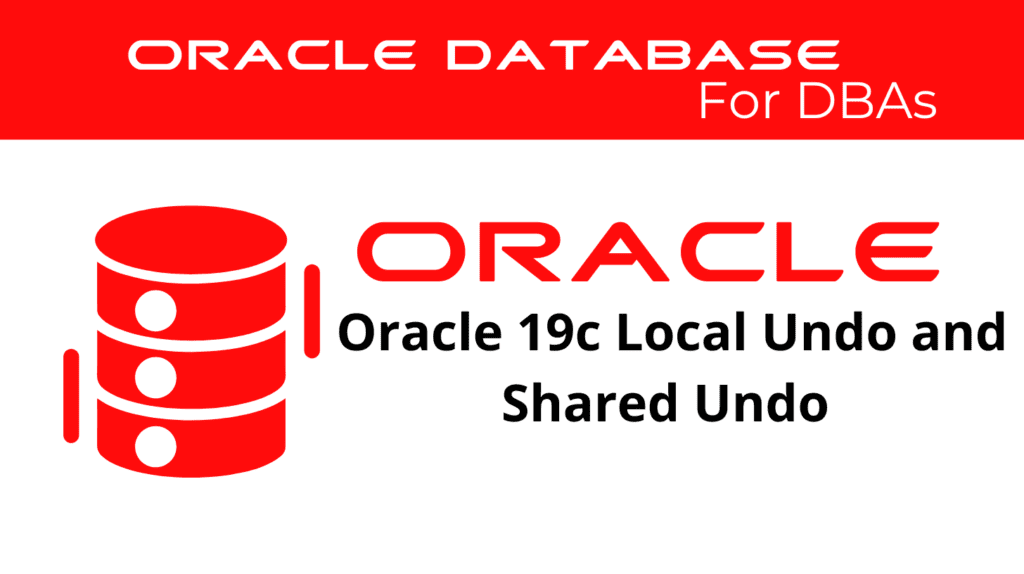
In Oracle 19c, understanding the differences between Local Undo Mode and Shared Undo Mode is crucial for database administrators. These two modes play a significant role in managing undo data, impacting performance and resource allocation. This guide will delve into the key features, benefits, and best practices for Local Undo Mode and Shared Undo Mode in Oracle 19c.
Local Undo Mode
LocalUndo Mode involves each pluggable database (PDB) having its own undo tablespace. This mode provides isolation and control over undo data within each PDB, enhancing performance and management.
Key Features of Local Undo Mode
Isolation: Each PDB has its own undo tablespace, ensuring data isolation.
Performance: Improves performance by reducing contention for undo resources.
Control: Provides greater control over undo data management within each PDB.
📢 You might also like: Oracle 19c Managing Resumable Space Allocation (Category: Oracle Database Admin)
Benefits of Local Undo Mode
With the introduction of Local Undo Mode in Oracle 12.2, several advantages have emerged:
- Faster Unplug and Recovery Operations: Local undo allows quicker unplug and recovery processes.
- Enhanced Features: Features such as relocating a PDB, Flashback Pluggable Database, and Hot Cloning require local undo to function optimally.
Steps to Enable Local Undo Mode
To enable LocalUndo Mode in Oracle 19c, follow these steps:
Determine Current Undo Mode
To check if your database is using LocalUndo Mode, run the following query:
SELECT PROPERTY_NAME, PROPERTY_VALUE
FROM DATABASE_PROPERTIES
WHERE PROPERTY_NAME = 'LOCAL_UNDO_ENABLED';
Modify Undo Mode
If you need to switch from Shared Undo to Local Undo, you must restart the database. Follow these steps:
- Shut down the database:
SHUTDOWN IMMEDIATE;
- Start the database in upgrade mode:
STARTUP UPGRADE;
- Enable Local Undo Mode:
ALTER DATABASE LOCAL UNDO ON;
- Shut down and restart the database normally:
SHUTDOWN IMMEDIATE;
STARTUP;
When switching to Local Undo from Shared Undo, Oracle creates undo tablespaces for each container automatically.
Monitoring Local Undo Mode
Monitor the performance and status of Local Undo Mode using dynamic performance views such as V$UNDOSTAT and DBA_UNDO_EXTENTS. These views provide insights into undo tablespace usage and efficiency.
Example query to monitor undo tablespace usage:
SELECT tablespace_name, status, bytes, maxbytes FROM dba_data_files WHERE tablespace_name = 'UNDO_TBS';
Shared Undo Mode
Shared Undo Mode involves a single undo tablespace shared among all PDBs within a multitenant container database (CDB). This mode simplifies management and reduces storage requirements.
Key Features of Shared Undo Mode
Simplicity: A single undo tablespace for all PDBs simplifies management.
Efficiency: Reduces storage overhead by sharing undo resources.
Centralized Management: Simplifies monitoring and maintenance of undo data.
Steps to Enable Shared Undo Mode
To enable Shared Undo Mode in Oracle 19c, follow these steps:
- Set the CDB as the current container:
ALTER SESSION SET CONTAINER = cdb$root;
- Create a shared undo tablespace:
CREATE UNDO TABLESPACE shared_undo_tbs DATAFILE '/path_to_undo_file/shared_undo_tbs.dbf' SIZE 1G AUTOEXTEND ON;
- Enable Shared Undo Mode for the CDB:
ALTER DATABASE SET DEFAULT UNDO TABLESPACE = shared_undo_tbs;
Monitoring Shared Undo Mode
Monitor the performance and status of Shared Undo Mode using dynamic performance views such as V$UNDOSTAT and DBA_UNDO_EXTENTS. These views provide insights into undo tablespace usage and efficiency.
Example query to monitor shared undo tablespace usage:
SELECT tablespace_name, status, bytes, maxbytes FROM dba_data_files WHERE tablespace_name = 'SHARED_UNDO_TBS';
Benefits of Local Undo Mode and Shared Undo Mode
Understanding the benefits of Local Undo and Shared Undo in Oracle 19c provides several advantages:
- Improved Management: Local-Undo Mode offers isolated management, while Shared Undo Mode simplifies overall management.
- Performance Optimization: Local-Undo enhances performance through reduced resource contention, while Shared-Undo Mode optimizes storage usage.
- Flexibility: Choose the mode that best fits your specific database management and performance needs.
Monitoring both modes involves examining configurations and statuses to ensure that each mode operates efficiently and meets application requirements.
Best Practices
To effectively manage Local Undo Mode and Shared Undo Mode, consider these best practices:
- Regular Monitoring: Continuously monitor undo tablespaces to detect and resolve performance issues early. Use Oracle Enterprise Manager and dynamic performance views to gain insights into the status and performance of undo tablespaces.
- Use Oracle Tools: Utilize Oracle Enterprise Manager and dynamic performance views for comprehensive monitoring. These tools provide real-time data and historical analysis, enabling DBAs to track performance trends and make informed decisions.
- Educate Team: Train the database team in managing Local Undo Mode and Shared Undo Mode. Ensure that team members are familiar with the tools and techniques used to manage these modes.
- Keep Statistics Updated: Regularly gather and update statistics to help the optimizer make accurate decisions. Accurate statistics are crucial for maintaining the efficiency and consistency of the database environment.
Additional Tips
- Implement Automation: Use automation tools to streamline the management of undo tablespaces. Automated tools can alert DBAs to performance issues and suggest optimal adjustments.
- Conduct Regular Audits: Periodically audit undo tablespaces to identify long-term trends and areas for improvement.
- Engage in Continuous Learning: Stay updated with the latest Oracle updates and best practices. Continuous learning ensures that the team is equipped with the latest knowledge and techniques.
Conclusion
Oracle 19c’s capability to manage Local Undo Mode and Shared Undo Mode is crucial for maintaining optimal database performance. By leveraging these tools and strategies, database administrators can enhance SQL performance, ensure efficient resource utilization, and proactively address performance issues. Following best practices in managing these modes will help maintain a robust and efficient Oracle 19c environment.
Regular monitoring, proactive management, and continuous learning are essential components of effective database administration. By adopting these practices, organizations can ensure that their Oracle 19c databases operate at peak efficiency, delivering reliable performance even under varying workloads.
See more on Oracle’s website!
Be Oracle Database Certified Professional, this world is full of opportunities for qualified DBAs!





